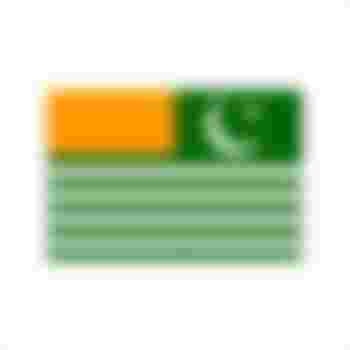Kashmir is a beautiful stat and one day it will a part of Pakistan insha Allah .
A Short Introduction to the Kashmir Issue
Essay20106 Pages
Sociology - War and Peace, Military
PDF version for only US$ 0.99
Download immediately. Incl. VAT
Format: PDF – for all devices
Add to cart
Excerpt
A Short Introduction to the Kashmir Issue
Thesis Statement
Kashmir is a disputed region between India and Pakistan, which has vitiated the political environment of the Indian Subcontinent. The Kashmir issue stands as a debacle for nearly six decades and there has been almost no progress in resolving the problem.
Introduction
Kashmir is a mountainous region, which enjoys a very important geo-political situation. It is surrounded by Pakistan in the west and China embraces it in the east. The Indian provinces of Himachal Pradesh and Punjab are in the south. Its northern fringes touch the borders of Afghanistan too. The area is famous for its extra-ordinary natural beauty and resources. Presently, the northern and western sides of the region are occupied by Pakistan while the southern and eastern parts are controlled by the Indian Union. For over six decades, the region has been devastated by confrontations between the two countries. Both India and Pakistan are nuclear powers and in the case of another shooting war between them; the entire subcontinent including Kashmir may be destroyed. Presently, it is at the diplomatic hyper point of the bilateral relationships between the two countries.
Pre-history of the Conflict
The British Indian Empire was formed of hundreds of princely states spread all over the Indian Subcontinent. After the World War II, when the British finally decided to bring their rule to an end, the fate of these princely states was brought under scrutiny. The Princely states were now supposed to join either India or Pakistan after the British authorities leave. In regards of this process of the evolution of India and Pakistan, Jyoti Trehan remarks, “The process of integration of princely states was not without its highs and lows.”(Trehan 201)
Finally in June, 1947, the British accepted Pakistan Plan. But the Hindu Maharajah Sir Hari Singh (the ruling monarch of the erstwhile princely state of Kashmir) was hesitating to join either Pakistan or India. However, the census of 1941 shows that almost 77% of the population of Kashmir was comprised of Muslims (Das 264). Since the Maharajah had acceded to neither side until the formation of India and Pakistan in August, 1947, Pakistan decided to act along communal lines. Being a Muslim dominated state, it decided to ‘liberate’ Kashmir and backed the Azad Kashmir Force. In October, 1947, Pakistan invaded Kashmir and captured its northern and western parts. On the Maharajahs request and accession to India, the authorities in Delhi now reacted by sending troops to the region and Pakistani advances were arrested soon. Thus, the southern and eastern parts of the region were retained in the Indian Union and constituted as the state of Jammu and Kashmir.
Causes of the Conflict
To understand the causes of the conflict, the historic Partition of India has to be referenced. Under the British Rule, Indian Subcontinent was mainly inhabited by the two major religious groups, Hindus and Muslims. The two communities had friendly relationships and they offered a united struggle to achieve independence from the British Rule during the later half of the Nineteenth Century. But undercurrents of tension between the two communities became forceful with the lapse of time. Power politics between All India Muslim League and Indian National Congress (the two major political powers of the undivided India) culminated at widespread communal tension and violence during the 1930s and early 1940s. Consequently, the colossal task of partitioning India became unavoidable. After the Partition in 1947, Pakistan emerged as a Muslim dominated state while India emerged as a secular, democratic country. And the province of Kashmir, which is situated at the border of the two countries, got tangled and entrapped between them.
The Course of Indo-Pak Confrontations
1940 – In the Lahore Resolution, M. A. Jinnah puts forward the Two-nation Theory and the demand of Pakistan is raised.
1946 – Muslim Conference takes on the Azad Kashmir Resolution.
October, 1947 – War breaks out between India and Pakistan over the Kashmir issue.
1965 – Indo-Pak War breaks out again. Pakistan is defeated and the Tashkent Pact is signed.
1971 – Indo-Pak War breaks out once again over the East Pakistan.
1972 – East Pakistan is liberated and the Bangladesh Republic is formed.
1978 – Military Rule in Pakistan. Proxy war with India begins. Pakistan affirms its support for the separatist organizations in Punjab and Kashmir.
1999 – Kargil War takes place between India and the Pakistan backed infiltrators.
2008 – Successful Assembly Elections in the Jammu and Kashmir State in India. National Conference emerges as a major political power in the state.
The Current State of Affairs
With the lapse of time, Pakistan has shown tendencies towards Military Rule and autocratic governance. On several occasions, India has alleged that Pakistan has sponsored the different terrorist organizations in Kashmir. Moreover, India holds Pakistan responsible for several devastating terrorist attacks directed against India. On the other hand, Pakistan affirmatively sticks to its policy of extending ‘moral support’ to the separatists in Kashmir. In such a state of affair, the common Kashmiris are suffering most. The innocent people are being victimized by baneful separatist propaganda. Confrontations between Indian military and armed separatists have caused huge loss of property, money, and lives so far. Moreover, the specter of Al Qaeda and Taliban has made the situation more complicated and dangerous in this part of the world.
Conclusion
Kashmir issue has been the primary cause of diplomatic, political, and military stand off between India and Pakistan. Of late, both the sides are showing interest to begin bilateral talks once again. According to Farah Ibrahim, the solution of the issue lies in a planned conflict Resolution (Ibrahim 289). The way to this conflict resolution lies in the methods of psychological intervention. Psychological perspective of the problem is more propound than its military, political, and diplomatic dimensions and interpretations. Unlike the “sharp rise in the ideal of Hindu nationalism” (Wirsing 163), solution to Kashmir issue lies in the acceptance of the fact that the common Kashmiris deserve to live a normal and peaceful life. India and Pakistan both must come forward to eradicate the terrorist organizations functional in Kashmir, and continue the bilateral talks. The confidence building measures must be initiated meaningfully. In this way, by mutual goodwill, the political authorities of India and Pakistan can bring peace to the doomed province.
Please pray for Kashmir Muslims to release from cruel hinduz .

If you like my article please subscribe me and comment here .
Support me I will support you 😃
Thanks.

I sub your id plz back it.plz don't spam me. Plz help